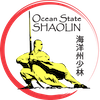
“If you want to be wrong, then follow the masses.”
~Socrates
“Beware that, when fighting monsters, you yourself do not become a monster … for when you gaze long into the abyss. The abyss gazes also into you.”
~
Activism is a very important aspect of society. When there are injustices in the system that need to be changed, humanity must unite and find strength in numbers. The camaraderie we feel in meeting others with similar ideals is very rewarding. However, just like anything else in life, activism can be used to unite or divide us around a cause which may be good or evil.
Activism relies on group think to achieve its goals. It’s important to stay true to your ethics and not lose sight of who you are as an individual. Some “grassroots” groups are created for the sole purpose to control the opposition to corporate/government agendas. Some groups are formed by sincere people but either become infiltrated, sell out, experience blackmail or are threatened to compromise their message. Those who are able to maintain their original objectives, are not likely funded by government, social non-profits nor corporations and manage to stay under the radar.
Things to keep in mind & questions to ask yourself when working with others towards a common goal:
- The Message – Has the group’s message been consistent from the beginning? If the group formed around a single issue, be aware when other causes get added on to the original mission. If the group started out politically neutral, be aware of any alliances made with a political party or if the mission turns into a campaign for a candidate.
- The Methods – Activist groups often start out with community outreach (to inform, educate, inspire others) through public meetings, websites, a social media presence, rallies and social gatherings. Respectful, open debate with members of the public are often encouraged in the beginning. Notice any gradual changes and escalation in tactics. Does it evolve to civil disobedience, destruction of property or media stunts? Methods like harassment, intimidation as well as civil disobedience tactics like sit-ins, blocking traffic, trespassing are NOT good techniques to achieve justice because it hurts the wrong people… those who have little control or knowledge of the issue. Noncompliance to an unjust order is an excellent tactic because an order only has merit when an individual complies with it. If enough people refuse to comply, an order becomes unenforceable. On the other hand, Civil disobedience is the gateway drug to violence.
- Group Dynamic – What are the meetings like? Is the environment welcoming or toxic? Is there a fair exchange of ideas? How often are there conflicts between members and how are the conflicts handled? The meetings should be pleasant yet focused, efficient and productive. Ideally, egos are kept in check, there is emotional maturity, a friendly rapport and no gossip. Most importantly, does the group respect individuality? How does the group treat a member with unique, even contrary ideas? Is the organization jealous, territorial or possessive… do they insist that all groups unite solely under their leadership? Do they resent other groups (with similar missions) scheduling events at the same time as theirs?
- Rhetoric – Does the delivery of the message match the actual message? For example, is the group preaching peaceful solutions in an angry, yelling tone? Do they encourage patiently communicating with the uninformed yet call them “sheep” and use other shaming tactics? Beware of speakers trying to influence the audience by relying on doom and gloom. Does the group attempt to discuss, educate, inspire or do they rely on rousing emotion, theatrics or peer pressure to influence the public?
- Funding – How does the group pay for supplies, equipment and transportation? In a grassroots group, members may voluntarily pitch in where and what they can. Does the group collect donations? If there is funding coming from outside sources, beware, because there ARE strings attached! It is wise to take note of the money trail. Are the funds being put to good use? What is the ratio of money spent on educational materials (flyers, handouts, legal help, experts) vs entertainment items (dancers, music and food)?
- Symbolism – The colors and shapes of symbols deliver messages directly to the subconscious mind (bypassing the thinking mind) for psychological and emotional effects on the viewer. Symbols have been studied for centuries and are used extensively by marketing, media, government and entertainment industries to influence the consciousness of the public. They may be used positively by imparting inspiration, comfort, joy or negatively by instilling fear, hopelessness and anger. The ultimate goal of this silent but powerful communication tool (which is used on the group’s signs, stickers, apparel, logos, banners, social media and website) is to influence behavior. Symbols are often recycled and repeated throughout history.
- Slogans and Chants – Another powerful tool. Simple, rhythmic chants are used to keep the message in the listener’s head even after the event has ended. The best slogans are clever and have a clear, unmistakable meaning. “My body, my choice” is a great slogan because the meaning is solid no matter what issue you apply it to. Many chants are useless or worse yet, manipulative because they are ambiguous and are open to interpretation. Some are even deceptive and shaming. Think about “Silence is violence”. The first word, “silence” is neither good nor bad in itself but is equated to the word, “violence” which almost always enters the consciousness as a negative.
- Idols, Martyrs and Heroes – They are used to win over the hearts and minds of the people. Often, someone in the organization will emerge as a star and is put on a pedestal. This person is usually charismatic, attractive and a great speaker. He/she is revered as the voice for all and can do NO wrong in the eyes of admirers. Activists also use icons from the past to inspire virtuousness (a good thing) or to justify aggressive tactics (not so good) in the present. When members think that they need to associate themselves with a famous personality to attract awareness to the cause, it shows low morale and poor leadership. This makes them very easy to deceive and is something to be concerned about.
- Media Coverage – The more mainstream media coverage the group gets, the more you must question the group’s connections. The “any attention is good attention” mentality should be of concern. Keep your distance when the organization begins resorting to stunts like trespassing, vandalism, intimidation and other disruptive tactics just to get noticed by the media.
- Solutions – Is the organization solution oriented? Do the speakers terrify the audience with warnings of impending gloom/doom yet fail to provide a solution? This is a huge red flag. Inciting fear, anger and frustration as a tactic only deepens cognitive dissonance. Fear puts people in a fight or flight state which is a terrible place to be in for sound decision making. Rousing people’s emotions without empowering them with ideas for small actions that they can make towards a positive change can only have detrimental effects.
Don’t walk, run the other way if the rhetoric turns alarmist and provokes emotions without giving a clear directive.
- Typical phrases to watch for, ALL may be true but are usually said to exploit fearful and frustrated emotions…
- “Peaceful protest haven’t worked, we need to try something else”
- “Time is running out”
- “People are dying”
- “They are coming for our children”
- “It’s time for the people to rise up”
- “America is built on revolution”
- “We need to make ourselves heard”; “we need to get loud”
- “We need to burn this system down”
- “It’s time to stop being nice”
- “When has there ever been in history a successful revolution without bloodshed?” If you hear this, do some critical thinking, ask yourself when has a bloody revolution resulted in more freedom for the people?
- “When are people going to fight back?”
- Herd Mentality – The bigger a group is, the more difficult it is to control the conduct of each person. Members have differing levels of emotional stability and maturity. Some may have psychological issues. Unfortunately, some may get violently carried away with their actions so it is important to ALWAYS inspire calmness, ethics, diplomacy, good communication and rational thinking. When leaders urge action, they should suggest appropriate, ethical and lawful ideas. Organizers, speakers and leaders may not be responsible for the actions of others but they are responsible for their own words.
- Rationalizing Bad Behaviors – Check your self, are you making excuses for organization leaders/members who break the law or use bullying tactics? “Well, she’s been doing this nonstop”, “She’s upset because she lost her business”, “He’s just frustrated”, “He’s a father and afraid for his family”. Think for yourself!
